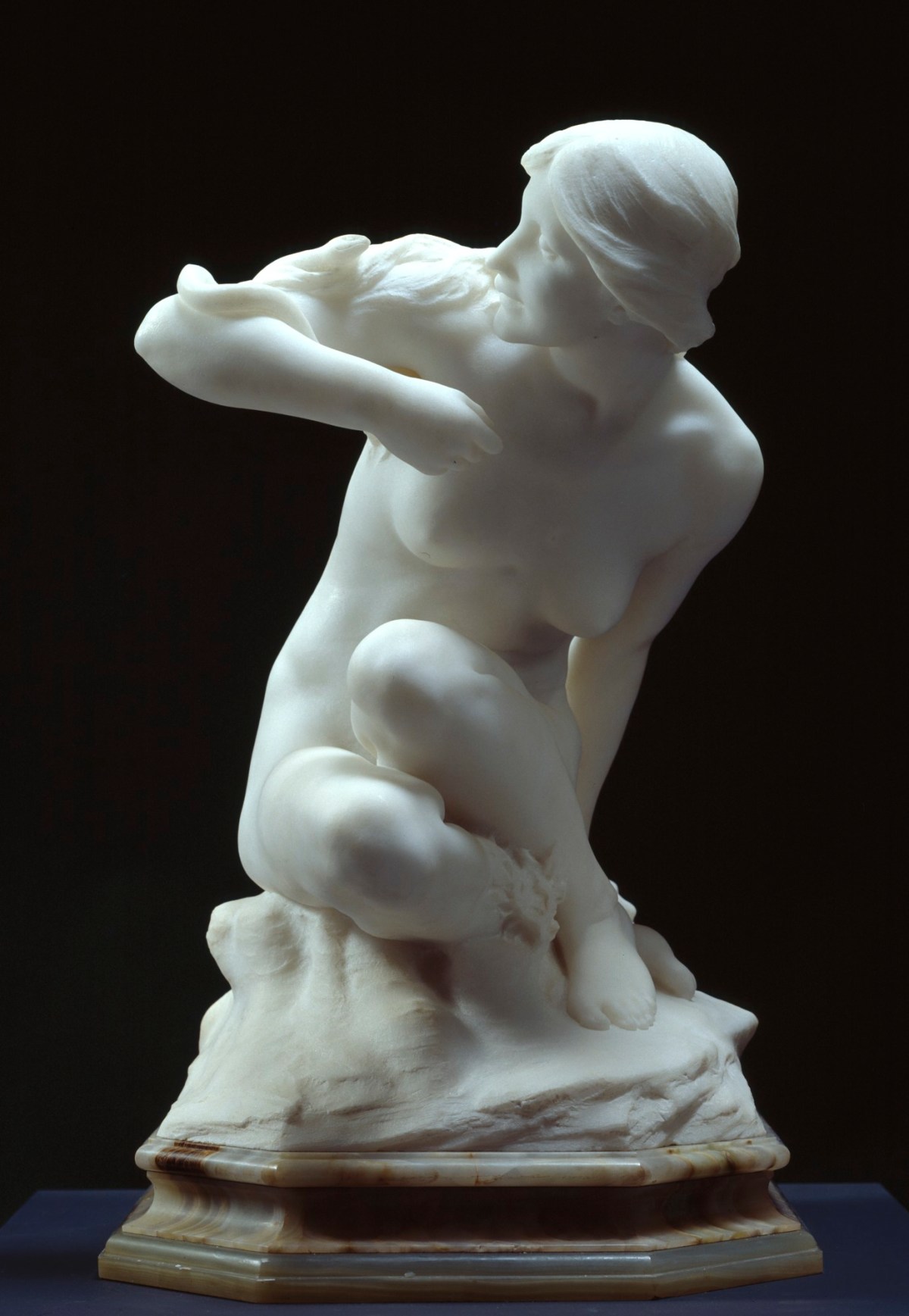
Alfred Drury RA, Lilith, 1916.
Marble. 480 mm x 300 mm x 360 mm, Weight: 37.8 kg. © Photo: Royal Academy of Arts, London.
This image is not available to download. To licence this image for commercial purposes, contact our Picture Library at picturelibrary@royalacademy.org.uk
Lilith, 1916
Alfred Drury RA (1856 - 1944)
RA Collection: Art
According to Hebrew folklore, Lilith, the first wife of Adam was banished from Eden for refusing to be subservient to her husband. She is portrayed in various mythologies as a vengeful temptress. In the late nineteenth century, the subject of Lilith attracted European Symbolist artists and writers, since she encapsulated the dark romantic qualities of the femme fatale. Dante Gabriel Rossetti painted ‘Lady Lilith’ (1864-73; Delaware Art Museum, Wilmington), John Collier ‘Lilith’ (1887; Private Collection) and George MacDonald published his novel ‘Lilith’ (1895).
Drury’s sculpture was exhibited at the Royal Academy in 1916. The catalogue entry accompanied by an extract from Rossetti's poem 'Eden Bower' (1868), which had been written as a companion to his painting ‘Lady Lilith’:
"Lend thy shape for the lore of Lilith -
In thy shape I'll go back to Eden.
Then Eve shall eat, and give unto Adam."
In 1913, the year he was elected an RA, Drury had exhibited a bronze statuette titled 'Lilith' at the Royal Academy.
Alfred Drury studied at Oxford School of Art and the National Art Training School at South Kensington under Dalou and Lanteri. In 1881 he followed Dalou to Paris where he worked as his studio assistant until 1885. On returning to England Drury became an assistant to J.E. Boehm.
His work showed the influence of Dalou until 1893 when he exhibited his plaster 'Circe' (cast in bronze 1894, Leeds City Art Gallery) at the Royal Academy. This work marked a transition towards the New Sculpture style practised by artists such as George Frampton, Harry Bates and Alfred Gilbert.
Aside from his romantic and symbolic works, Drury became a successful sculptor of public monuments and architectural decorations. Among his commissions were lamp standards and a sculpture of Dr Joseph Priestly for City Square, Leeds (1899) and figure groups for the exterior of the War Office, Whitehall (1905-1908), allegorical female figures for Vauxhall Bridge (ca.1905) and figures for the entrance façade of the Victoria and Albert Museum (ca.1905–1908).
Object details
480 mm x 300 mm x 360 mm, Weight: 37.8 kg



